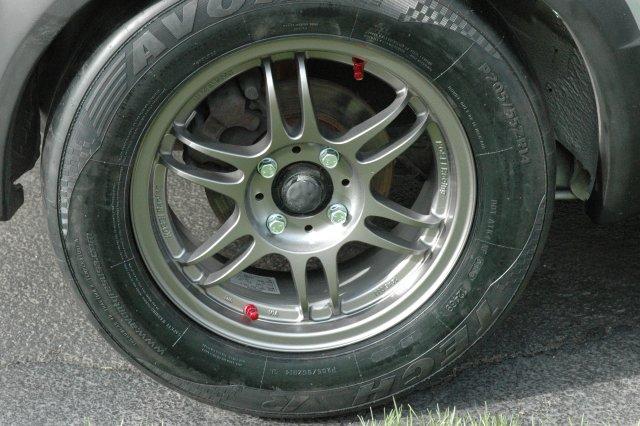I recently purchased some Kosei rims and thought it was a bit odd that there are two valve stems. I asked Mike Glassburner (whom I bought four of them from) why they have two. He indicated that it was to make purging air out of race tires easier in order to replace it with nitrogen. Hmmm. I’ve seen it at the track, but never gave it too much thought. Later that night I was over at a friends house yelling and pointing my fists at my Prelude, I mentioned this. Grant explained the basic purposes and advantages of using nitrogen versus air, and even told me about a local shop that I could get a bottle from cheaply.
Nitrogen is moisture free thus provides a more constant rate of expansion and contraction. Some people also state that tires also run cooler when nitrogen is used. Assuming someone doesn’t mind the additional cost, any inconvenience of using sourcing nitrogen and bringing a bottle to the track, are there any other down sides to doing this? When towing, are there any DOT regulations that I should be aware of when transporting nitrogen that may make this a PITA?
Since it’s a Friday and I started this thread, I suppose it’s o.k. for me to vear off-topic a bit. Besides, it’s a “how nitrogen is used in packaging beer” diversion.Just thought this was interesting…
“Guinness is canned with a mixture of carbon dioxide and nitrogen. Nitrogen is not absorbed into the beer nearly as well as carbon dioxide, so even though a can of Guinness may be at the same pressure as a can of lager, it contains less CO2 (and is therefore less fizzy) because the nitrogen makes up some of the pressure.
Because a beer like Guinness contains less dissolved CO2, if you poured it from a can with no widget, the head would not be very thick because most of the CO2 would stay dissolved.
The purpose of the widget is to release the CO2 from some of the beer in the can to create the head. The widget is a plastic, nitrogen-filled sphere with a tiny hole in it. The sphere is added to the can before the can is sealed. It floats in the beer, with the hole just slightly below the surface of the beer.”



 Reply With Quote
Reply With Quote












Bookmarks